Understanding Alcohol’s True Nature
Alcohol is a pervasive element in many societies, often associated with relaxation and celebration. Despite its widespread acceptance, questions still arise: Is alcohol a drug? Understanding the classification of alcohol, its effects, and its societal implications is crucial for health awareness and responsible consumption.
Alcohol: A Drug Defined
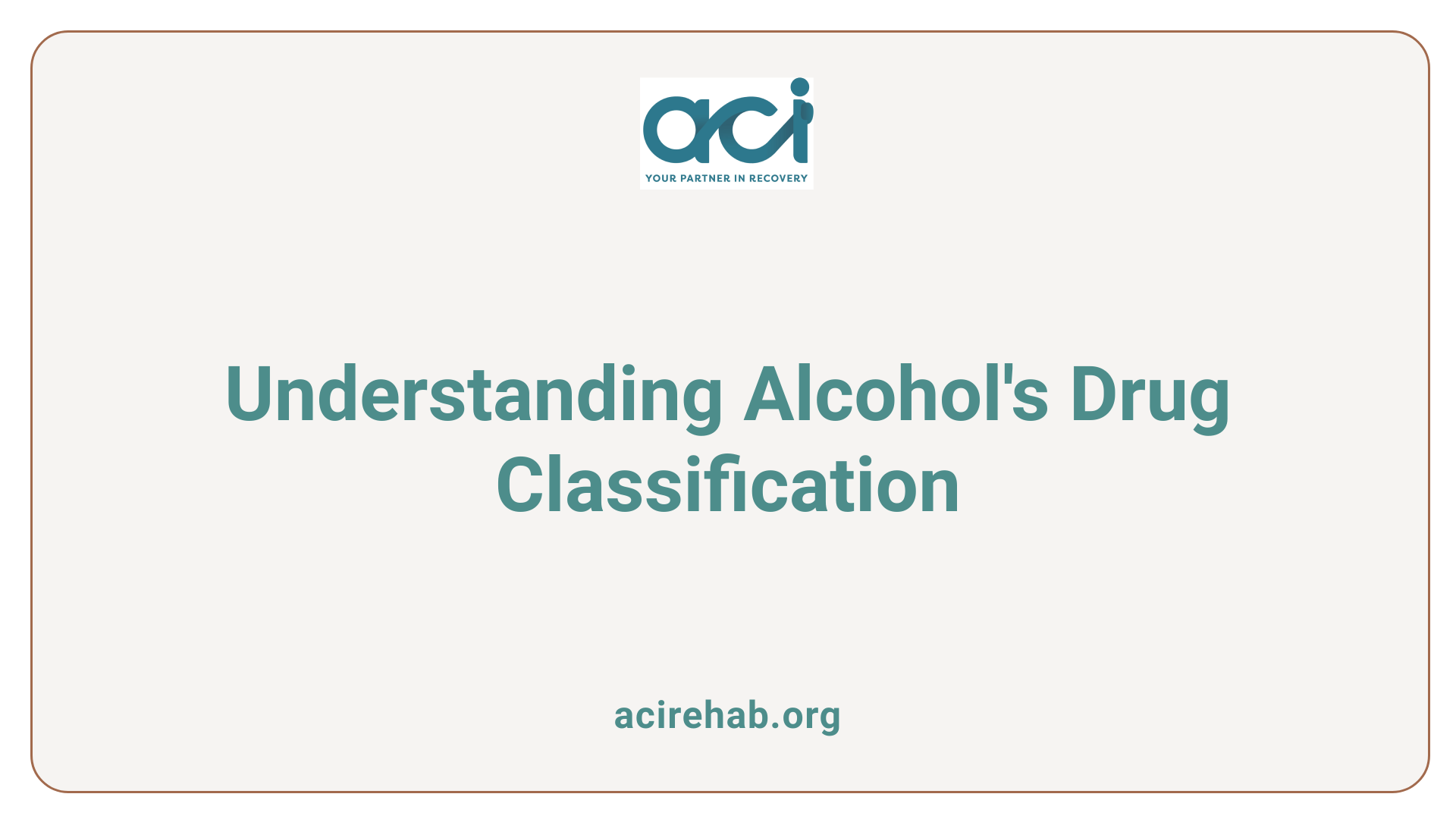
Alcohol’s Classification as a Drug
Alcohol is classified as a drug due to its psychoactive effects and potential for addiction. Specifically, it is recognized as a Central Nervous System (CNS) depressant, which slows down brain activity and alters mood, cognition, and behavior. The chemical composition of alcohol is ethanol (C₂H₅OH), and its consumption can lead to significant physiological changes, resulting in tolerance and dependence over time.
In the United States, alcohol is the most commonly used addictive substance, with 28.8 million adults experiencing Alcohol Use Disorder in 2022. This staggering number underscores its pervasive role in public health concerns. Regular alcohol use can lead to serious health issues, including liver diseases, certain cancers, and mental health disorders like depression and anxiety, further emphasizing its classification as a drug.
Is Alcohol Considered a Drug by the Federal Government?
Yes, alcohol is considered a drug, but it is not classified as a "controlled substance" under U.S. federal law. The federal government regulates alcohol due to its potential health risks and societal impacts, focusing primarily on its production, distribution, and sale. Regulation of alcohol is primarily managed at the state level, following the repeal of Prohibition with the 21st Amendment.
Despite not being categorized alongside other controlled substances, alcohol is subject to specific federal regulations, especially concerning safety in sensitive contexts like aviation. For instance, there are strict prohibitions on operating aircraft while under the influence of alcohol. These regulations emphasize the legal implications and responsibilities associated with alcohol consumption, highlighting its status as a drug in terms of societal and health impacts.
Why Alcohol Is Considered a Strong Drug
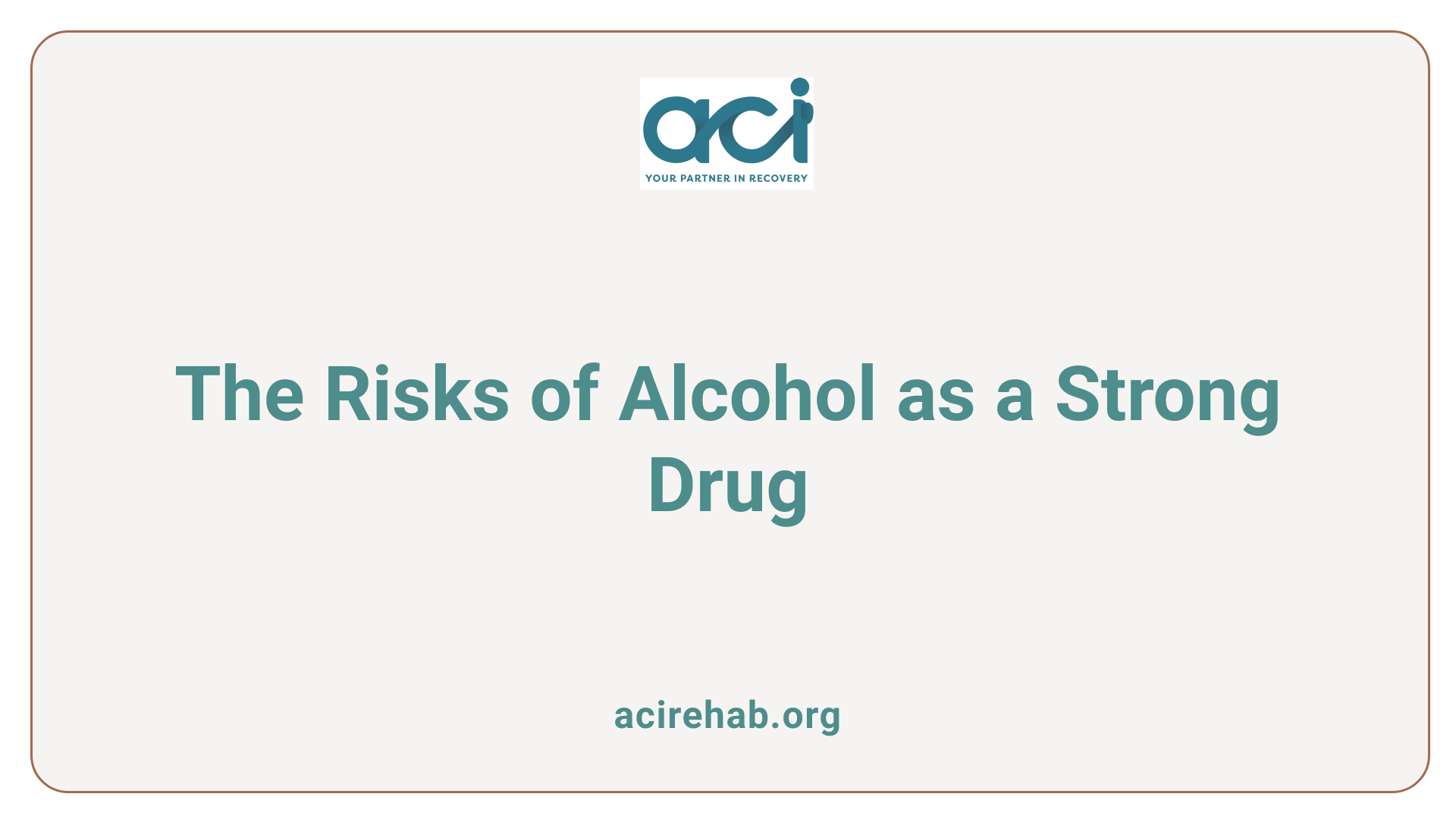
Why is alcohol considered a strong drug?
Alcohol is primarily classified as a Central Nervous System (CNS) depressant. This means that it slows down brain activity significantly, affecting cognition, emotions, and perception. With nearly 28.8 million adults diagnosed with Alcohol Use Disorder (AUD) in the U.S. alone in 2022, the risk of addiction looms large for many users. Regular consumption can lead to changes in brain chemistry that reinforce the cycle of addiction, as the release of endorphins and dopamine creates pleasurable sensations that encourage continued use.
Health risks associated with alcohol
The health risks associated with alcohol are profound. Chronic use can lead to serious conditions such as:
- High Blood Pressure: Regular intake raises blood pressure, increasing the risk of heart disease.
- Liver Disease: Long-term drinking can result in liver disorders, including alcoholic hepatitis and cirrhosis.
- Cancers: Gain various cancers, such as breast, liver, colon, and head and neck cancers, have been linked to alcohol consumption.
Furthermore, alcohol use can exacerbate mental health issues, including anxiety and depression, resulting in a harmful cycle of dependency. Despite its legal status, the risks associated with alcohol may surpass its perceived benefits, making it one of the most dangerous drugs in society today.
| Health Risk | Description | Relation to Alcohol |
|---|---|---|
| High Blood Pressure | Increased risk of heart disease | Common consequence of chronic use |
| Liver Disease | Conditions such as hepatitis and cirrhosis | Stem from long-term consumption |
| Various Cancers | Increased susceptibility to several cancer types | Associated with heavy drinking |
The Effects of Alcohol on Mood and Memory
How does alcohol affect mood and memory?
Alcohol influences mood and memory through its psychoactive properties. In moderate amounts, it can induce feelings of euphoria and relaxation due to the release of dopamine, a neurotransmitter associated with pleasure. This initial effect is often why individuals choose to drink
However, as alcohol consumption increases, particularly beyond a blood alcohol concentration (BAC) of 0.08%, the effects can turn negative. Higher levels of alcohol in the system impair reasoning and memory, potentially leading to blackouts—periods where the individual cannot recall events or experiences.
Short-term and long-term effects of alcohol
While short-term effects can include improved mood and sociability, long-term heavy drinking poses severe risks. Chronic alcohol use has been linked to persistent mental health issues such as depression and anxiety. Cognitive impairments can also develop over time, especially due to damage in the hippocampus, the brain region responsible for memory formation.
The cycle of alcohol use often results in a feedback loop where the initial positive mood effects lead to increased drinking, ultimately resulting in significant negative emotional states and serious memory-related conditions. Recognizing these effects is crucial for maintaining mental health and preventing alcohol-related disorders.
The Gateway Effect: Alcohol as a Precursor to Other Drugs
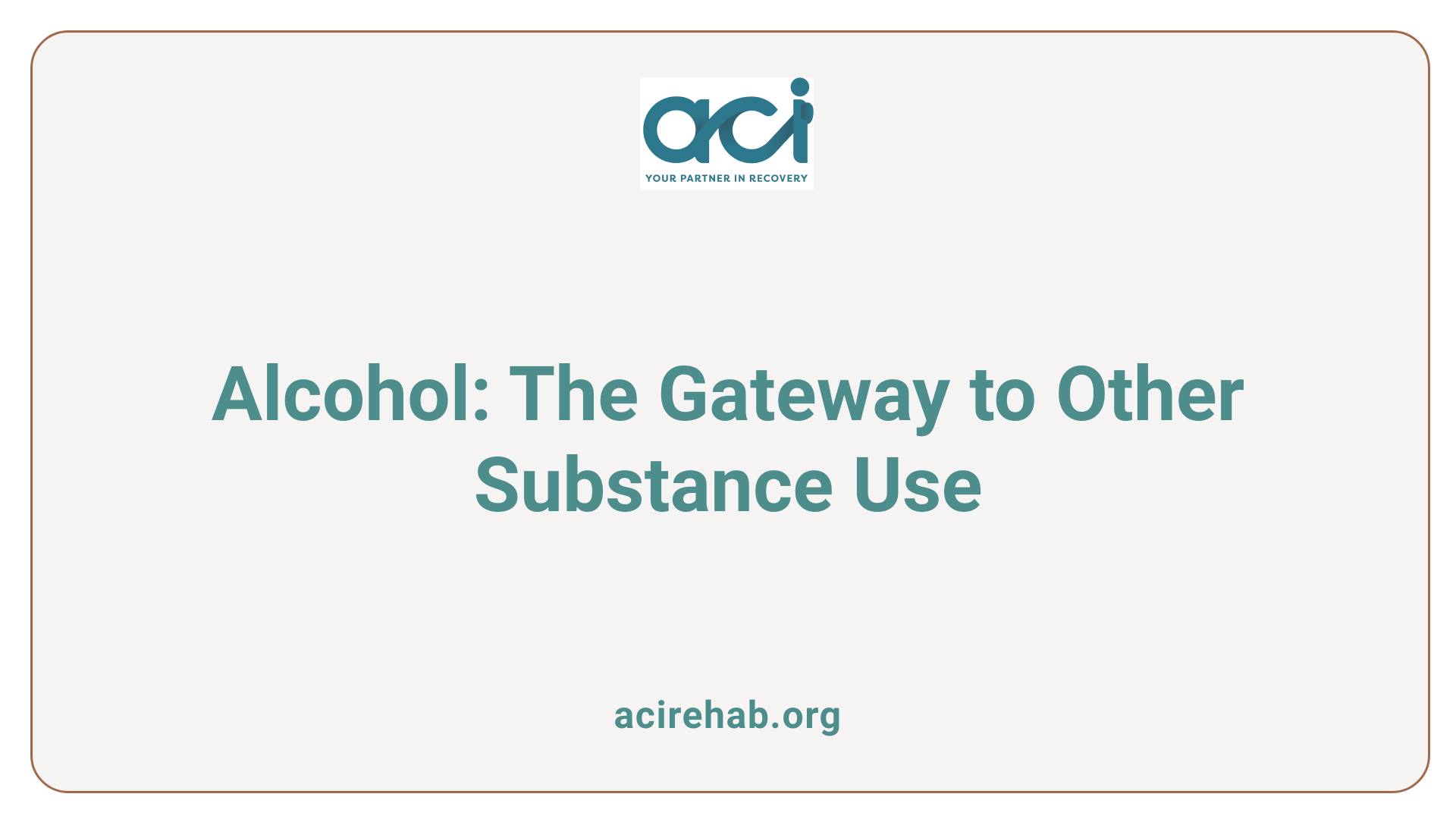
Why is alcohol considered a gateway drug?
Alcohol has long been recognized as a potential gateway drug due to its role as a precursor to the use of other substances. It often lays the groundwork for experimentation with more addictive drugs, including tobacco and illicit substances. Research indicates a troubling correlation between early alcohol consumption and the future likelihood of drug misuse.
Adolescents who consume alcohol are statistically more inclined to try other drugs later in life. A significant portion of individuals who develop dependencies on drugs like prescription opioids have reported prior use of alcohol. This pattern can be attributed to how alcohol facilitates risk-taking behaviors, exposing individuals, particularly young people, to environments where other drugs are available.
Moreover, alcohol consumption can induce biological changes in the brain, increasing vulnerability to addiction. These changes are often accompanied by alterations in brain chemistry, making individuals more susceptible to seeking other impulsive and potentially harmful substances. Therefore, preventing alcohol use in younger populations stands as a critical step in combating the wider issue of substance use disorders.
Research supporting gateway hypothesis
Numerous studies corroborate the premise that alcohol functions as a gateway drug. Data reveals that a large number of people who misuse illicit substances had their initial encounters with alcohol, reinforcing its tendency to precede further substance experimentation.
Additionally, research conducted by NIDA (National Institute on Drug Abuse) highlights that alcohol’s impact on the brain may trigger pathways that lead to heightened risk of addiction to more potent drugs. Understanding this gateway effect emphasizes the importance of early intervention and education regarding responsible alcohol consumption, especially among youth. Such measures may significantly mitigate future challenges associated with drug dependency, emphasizing alcohol’s critical role in substance abuse narratives.
Alcohol as a Psychoactive Substance: Comparison with Other Drugs
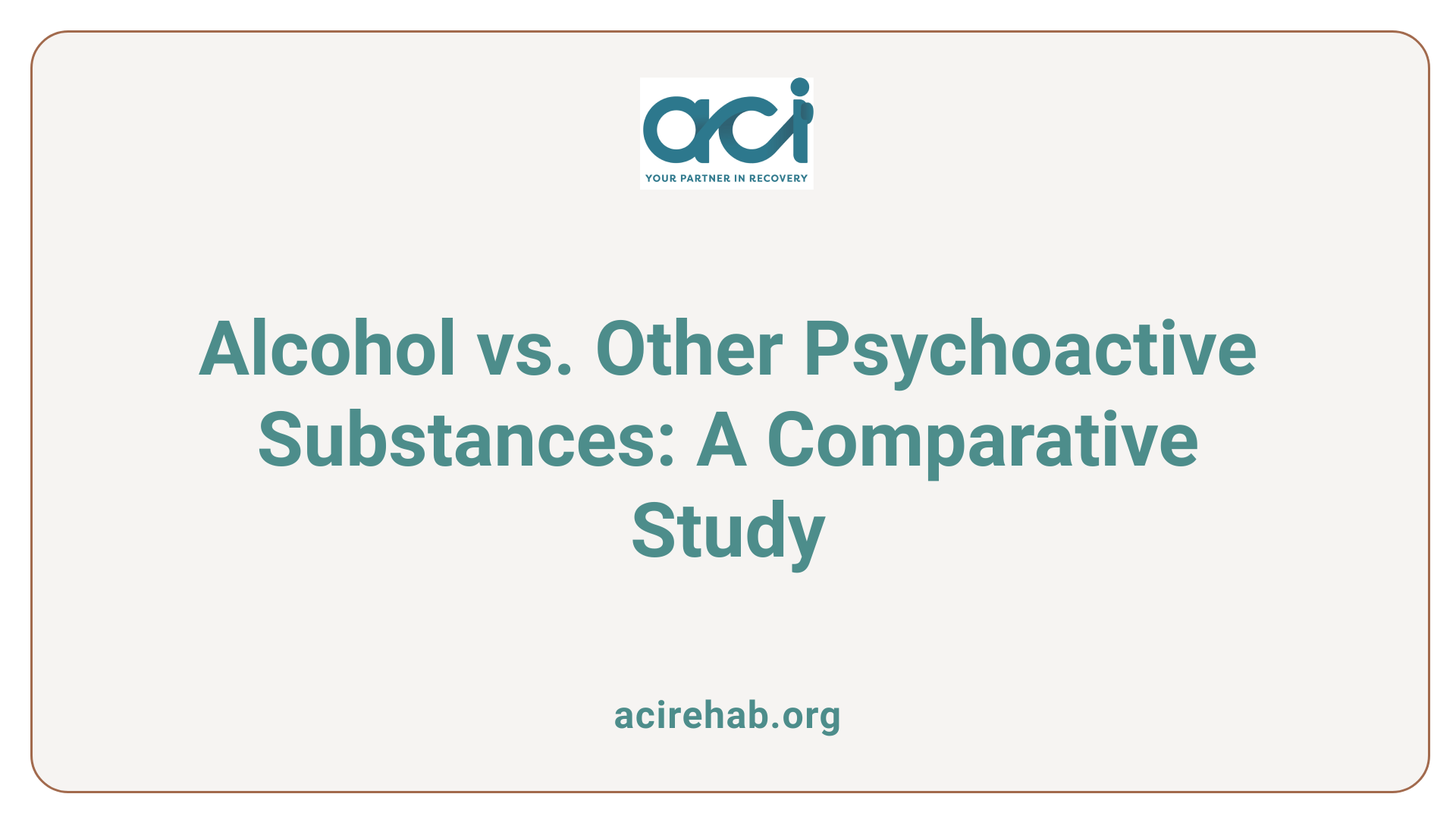
What role does alcohol play as a psychoactive substance compared to other drugs?
Alcohol stands out as a significant psychoactive substance, acting primarily as a central nervous system (CNS) depressant. Initially, consumers may experience a sense of euphoria and heightened sociability. However, as consumption increases, alcohol impairs judgment, slows reaction times, and can lead to more severe cognitive functions being affected.
The effects of alcohol are influenced by various factors, including gender, mood, and whether food is consumed prior to drinking. Alcohol is primarily metabolized in the liver at a typical rate of one standard drink per hour. However, excessive drinking can lead to dangerously high blood alcohol concentrations (BAC), exceeding .30, which can result in life-threatening conditions like coma or death.
How does alcohol compare with other psychoactive substances?
While alcohol is legal and socially accepted, it presents health risks that may be underestimated. In comparison to other psychoactive drugs, such as marijuana or cocaine, alcohol is more widely used. Yet, it carries a reputation for being dangerous due to its high potential for addiction. When mixed with other substances, the risks can exponentially increase, leading to unpredictable and harmful effects.
| Substance | Classification | Common Effects | Addiction Potential |
|---|---|---|---|
| Alcohol | CNS Depressant | Euphoria, impaired judgment | High |
| Marijuana | CNS Depressant/Stimulus | Relaxation, altered perception | Moderate |
| Cocaine | Stimulant | Increased energy, heightened alertness | High |
Understanding alcohol’s potential dangers and its role as a drug is crucial for responsible usage and prevention of addiction-related issues.
Health Risks Associated with Alcohol
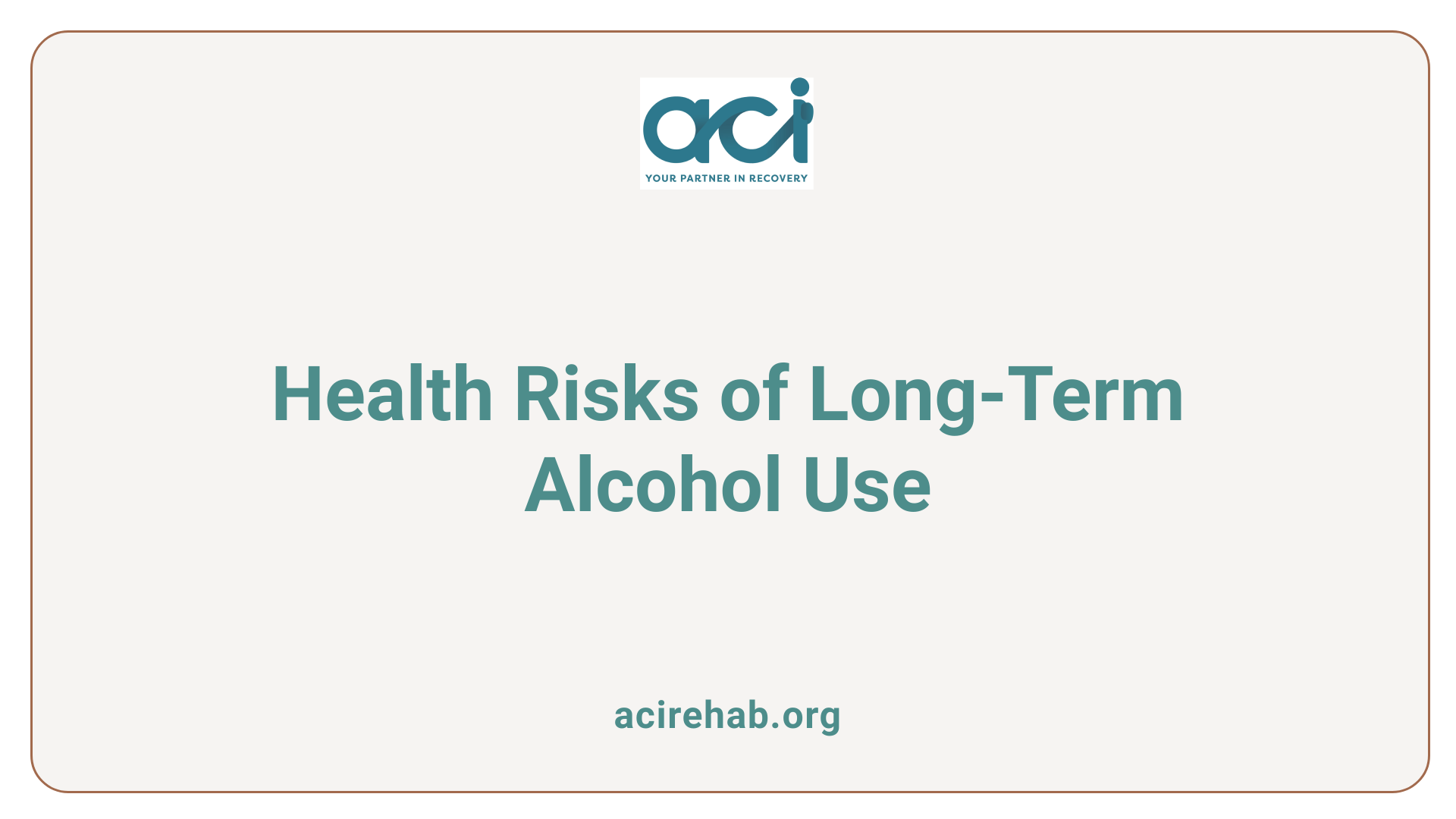
Health Risks from Long-Term Alcohol Use
Long-term alcohol consumption can lead to a variety of serious health complications. Chronic use can result in conditions such as liver disease, notably alcoholic hepatitis and cirrhosis, where the liver’s function is severely impaired. Additionally, alcohol increases the risk of high blood pressure and can lead to heart disease, making cardiovascular health a major concern for heavy drinkers.
Alcohol-Related Diseases
The health risks extend beyond liver and heart issues. Regular alcohol intake has been linked to an increased risk of several cancers, including breast, liver, and colorectal cancer. Furthermore, alcohol acts as a depressant, exacerbating mental health problems such as anxiety and depression, often leading individuals to consume more in an attempt to self-medicate.
The statistics paint a grim picture as alcohol is responsible for approximately 95,000 deaths annually in the U.S., highlighting its status as a leading preventable cause of death. Thus, the health risks associated with alcohol consumption demand serious attention to prevent addiction and mitigate long-term harm.
The Social Acceptance and Cultural Significance of Alcohol
Societal perceptions of alcohol
Alcohol is often viewed through a lens of social acceptance, making it unique among psychoactive substances. In the United States, roughly 85.6% of adults report having consumed alcohol at least once in their lives, illustrating its ingrained presence in social settings. Despite being categorized as a drug due to its potential for addiction and health risks, many individuals overlook these dangers because of alcohol’s legal status and social normalization. This leads to a paradox where harmful behaviors associated with alcohol use, such as binge drinking, may not receive the same level of scrutiny as illicit drugs.
Cultural impacts on alcohol consumption
Culturally, alcohol consumption is deeply woven into various traditions, celebrations, and rituals. Across different communities, from toasting at weddings to sharing drinks during holidays, alcohol plays a significant role in bonding and social interaction. However, this cultural significance can also perpetuate drinking behaviors that contribute to addiction and health issues. Furthermore, perceptions vary internationally; while certain cultures may embrace moderate alcohol consumption, others regard it with caution, reflecting diverse attitudes towards this potent substance.
| Aspect | U.S. Perception | Global Perspective |
|---|---|---|
| Alcohol’s Legality | Legal but heavily regulated | Varies by country |
| Social Reception | High social acceptance | Varies; some cultures are more abstinent |
| Cultural Norms | Integral to many social events | Celebratory but also cautioned in some cultures |
| Health Awareness | Often underestimated | Mixed views based on cultural context |
Understanding Alcohol Addiction and Recovery
What is Alcohol Use Disorder (AUD)?
Alcohol Use Disorder (AUD) is a condition characterized by an uncontrollable urge to consume alcohol, despite its negative effects on health and daily life. According to recent statistics, around 28.8 million adults in the U.S. experienced AUD in 2022. This addiction manifests both physically and psychologically, with individuals exhibiting cravings, withdrawal symptoms, and a heightened tolerance to alcohol’s effects.
What are the consequences of excessive alcohol consumption?
Excessive drinking can lead to severe health problems, including liver diseases, heart issues, and an increased risk of certain cancers. These health risks contribute to a staggering number of alcohol-related deaths, with approximately 88,000 fatalities each year in the United States.
What resources are available for addiction recovery?
Several resources exist to support individuals struggling with alcohol addiction:
| Resource Type | Description | Example |
|---|---|---|
| Treatment Centers | Facilities providing detox and rehabilitation services | Promises Behavioral Health |
| Support Groups | Community-led meetings for shared experiences | Alcoholics Anonymous (AA) |
| Therapeutic Approaches | Counseling and therapy options including CBT and motivational interviewing | In-person or virtual therapy |
Seeking help from professionals can be vital in recovering from AUD, guiding individuals towards healthier habits.
Alcohol’s Legal Status: A Controlled Yet Uncontrolled Substance
Legal implications of alcohol consumption
Alcohol is legal to consume in the U.S. for individuals aged 21 and older, which starkly contrasts with the legal status of many other drugs classified as controlled substances. Despite its legal status, alcohol is categorized as a drug due to its potential for abuse and addiction. This duality raises questions about how society understands and manages its risks.
Currently, alcohol is not included in the U.S. Drug Enforcement Administration’s scheduling of controlled substances, which often leads to a perception that it is less harmful than illicit drugs. However, with approximately 28.8 million adults in the U.S. struggling with Alcohol Use Disorder, the need for responsible consumption is crucial.
Regulatory differences from other drugs
While alcohol is regulated—and only available to adults—its classification is unique. Unlike many other drugs, alcohol is socially accepted and commonly consumed in various contexts, from social gatherings to family events. Yet, this regression into normalization can obscure the significant health risks associated with excessive consumption.
The regulation of alcohol contrasts with substances that are strictly prohibited regardless of social context, highlighting a societal paradox. For instance, marijuana use, despite being legalized in various states, still faces stricter federal regulations compared to alcohol. The challenges surrounding these regulatory frameworks continue to impact public health dialogues and policy decisions.
| Feature | Alcohol | Other Drugs |
|---|---|---|
| Legal Age | 21+ | Varies by substance |
| Schedule Classification | Not classified | Classified as controlled substances |
| Social Acceptance | High | Varies, typically lower for illicit |
| Health Risks | High (addiction, liver disease) | High (varies by substance) |
Understanding these legal complexities is essential in addressing alcohol’s role in addiction and its societal impact.
Recognizing Alcohol for What It Is
While prevalent and socially accepted, alcohol is undeniably a drug with significant psychoactive properties and potential for addiction. Understanding its true nature, from its biological impact to its role in society, is essential for informed decision-making about consumption. Acknowledging the risks outlined in both scientific research and public health data can guide responsible drinking behaviors and support those seeking recovery from its potentially harmful effects.
References
- Is Alcohol Considered a Drug? – Community Access Network
- Are You Asking "Is Alcohol a Drug?" – Arista Recovery
- Is alcohol a drug? Is alcohol a gateway drug? Why?! – JourneyPure
- Is Alcohol Considered a Drug? – Recovery Home
- Exploring the Query: Is Alcohol Questionably a Drug?
- Is Alcohol Considered a Drug? – The Plymouth House
- Alcohol: Is It a Drug? – Addiction Center
- Are You Asking Is Alcohol a Drug? at BrighterDay

